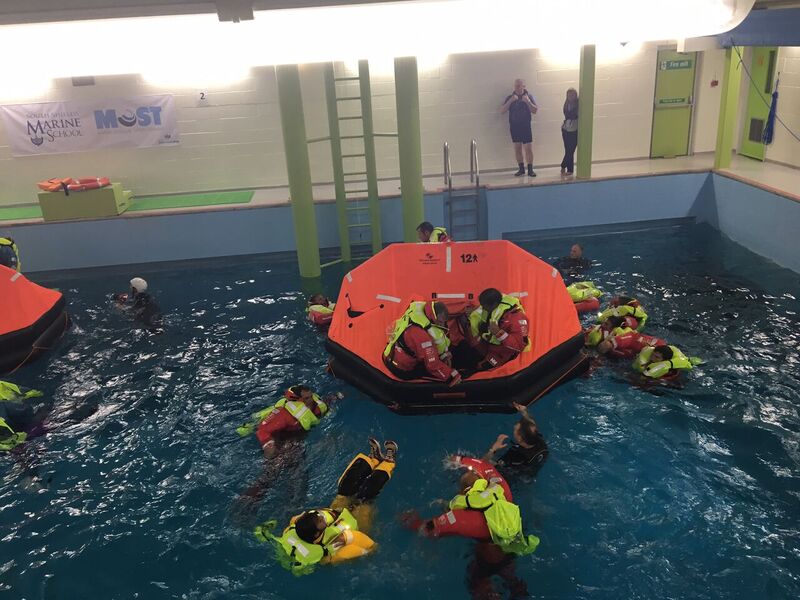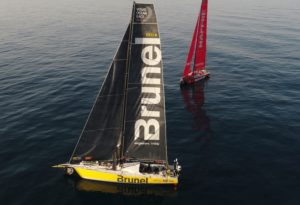Ocean Safety: survival techniques for Volvo racers

Many top Volvo skippers and crews have completed the Volvo Ocean Race multiple times – some as many as five.
But as Xabi Fernandez, Skipper of Mapfre and veteran of four previous races, comments: “There’s always something new to learn as technology moves forward and crews change. We’ve all benefitted hugely from Ocean Safety’s expert training session.”
So when Ocean Safety conducted their fifth intense Sea Survival training programme for all the crews and on board reporters taking part in this year’s race, for some it was a refresher and for others, like Martine Grael, Rio Gold medallist and world champion sailor who will be sailing AkzoNobel, it was a new experience.
The race organisers have worked closely with Ocean Safety for the last five races and the training has been developed around the World Sailing Appendix G training syllabus to ensure the crews all have an understanding of survival skills. The teams assembled at South Shields Marine and Offshore Training Centre taking advantage of the environmental pool equipped with wave machines and storm simulation, as well as the fire fighting facilities the college provides.
The time spent in the pool was an opportunity to practice various in-water exercises and to see the new Ocean SOLAS Ultralite liferaft for the first time which has been developed specifically for the race. Fire fighting training allowed the teams to understand the need for speed when tackling a fire on board and most were surprised at the small amount of time each fire extinguisher lasted – a 2kg dry powder extinguisher lasts around 10 seconds!
“Importantly, it reminds us that survival is a teamwork issue,” summarised Neil McDonald, Performance Manager for Mapfre. “The techniques we practised for staying together in the water is not something you can learn during an emergency. And of course there are a lot of changes in crew line ups for each race, so this is an under-pressure bonding exercise.”
Treading water for more than 10 minutes both in light clothing and then again in drysuits, along with launching and getting into a liferaft, while helping others who might be injured or unconscious was all part of the session, leaving even hardened crews understanding just how hard it is to be operating in far worse conditions.
Ocean Safety’s Training Manager, Steve Bockett, who was one of the team conducting the poolside and classroom training, commented: “The facilities and staff at the college in South Shields are outstanding. We have been able to develop and run a course to give the sailors the best opportunity to understand and use the equipment we provide.”
Alistair Hackett, Ocean Safety’s General Manager, was also both in and out of the water, talking the crews through the drills. He added: “We hope that the techniques learnt and the equipment demonstrated aren’t used. However the teams must plan for all possible eventualities. Although we have trained several of the sailors before they are all sailing with different teams around them.
“The aim is to get them thinking about the kit they have seen, develop their own plans and actions for different scenarios and ensure they all know what to do. Liferafts have been deployed twice in the last five Volvo Races and so the crews must be prepared for this eventuality.”
Options for man overboard equipment and procedures, search patterns and abandonment were all part of the syllabus, while swimming techniques and use of the Jonbuoy Recovery Module were practised in the pool.










